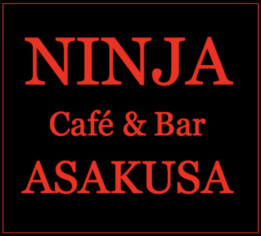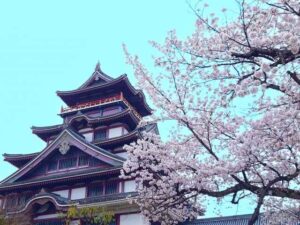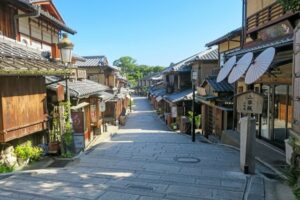A Complete Guide to "Gion Corner" Theatre
If you visit Kyoto, experiencing traditional Japanese culture is a must.
There are a variety of traditional performing arts in Japan.
They are Kyomai dance, Chanoyu tea ceremony, Ikebana flower arrangement, Koto music, Bugaku dance, Kyogen comedy, Bunraku puppet show, and Noh play.
Yet, it is difficult to experience all of them in a limited amount of time.
For those who are limited on time, we recommend the “Gion Corner", the perfect place for those who want to experience traditional Japanese culture in an hour.
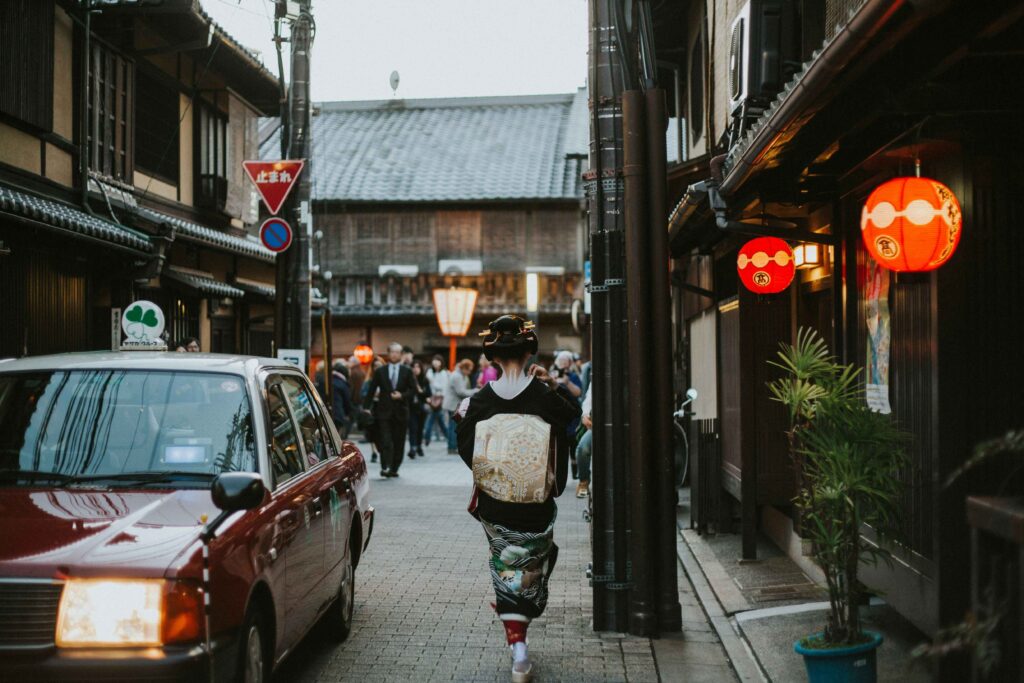
1. About Gion Corner
Gion Corner is a theater in the Higashiyama area, located in Gion Kobu, the largest of the five traditional entertainment districts of Kyoto.
The show is approximately one hour long, and includes seven traditional performing arts.
Bunraku puppet play only in April, June, July, August, October and November and Noh play only in March, May and September.
Do note that it is not an interactive performance, but one where the audience simply enjoys what is being presented to them.
The theater has a traditional Japanese-style room and a stage, allowing the audience to sit close to the stage and enjoy the performance.
Tickets
Tickets can be purchased through the Gion Corner website, at the theater box office, at select travel agencies, or at the ticket window on the day of the performance, subject to availability.
Out of 165 seats in the theatre, 30 are premium seats.
Premium seats: 6,600 yen (includes detailed information about the performance and a tablet with translation function)
Tea ceremony experience seats: 6,050 yen
General public, 23 years old and older: 5,500 yen
General, 16-22 years old: 3,850 yen
General, 7-15 years old: 3,300 yen
Preschool children: Free
(Ticket prices as of Feb 15, 2025)
Gion Corner Website Admissions and Reservations
Performance Schedule
Performances are held twice daily at 18:00 and 19:00. (During Dec 1 to March 13, performances are held only on Tuesdays, Wednesdays, Thursdays, and Fridays)
A detailed performance schedule can be found on the Gion Corner website.
2. Kyomai Dance - Kyoto's Traditional Dances by Beautiful Geishas
Kyomai is a dance that originated in Kyoto and has a history of about 200 years.
It is a dance that incorporates elements of Noh and Bunraku into emperor's court dance, and is characterized by its gorgeous and delicate movements.
At the Gion Corner, visitors can see dances performed by maiko dressed in beautiful kimonos.
At the “Miyako Odori” festival held every spring, visitors can see Kyoto-style dances performed by maiko and geiko (maiko apprentices).
3. Chanoyu Tea Ceremony - Brewing Kyoto's Traditional Green Tea
The Chanoyu tea ceremony is a traditional Japanese cultural practice that aims to calm the mind and to experience the principles of harmony, respect, purity, and tranquility.
Tea was brought to Japan by Chinese monks between the Heian and Kamakura periods.
At Gion Corner, visitors can learn the basic manners of the tea ceremony.
If you purchase a ticket for the tea ceremony experience seat, you can actually partake in the tea ceremony.
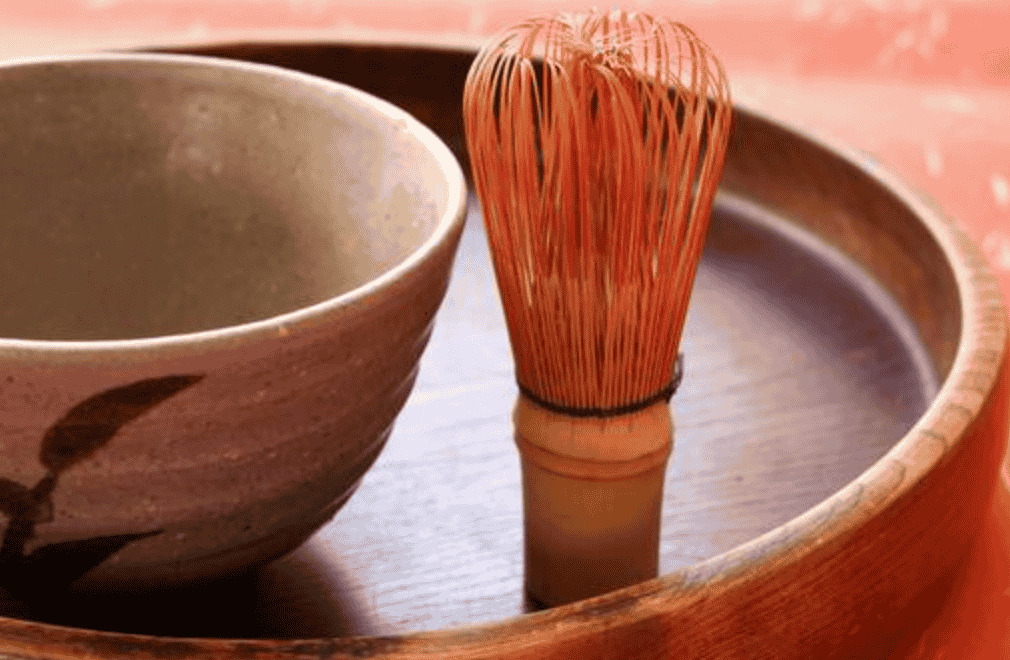
4. Ikebana Flower Arrangement - Enjoy the Simplicity of Beauty
Kado (flower arrangement) is the traditional Japanese culture of arranging flowers and leaves in vases.
It started with the offering of flowers to the Buddha, and was established as "ikebana" in the Muromachi period (1336-1573).
While flower arrangements have become popular in recent years and aim to fill the space with a large number of flowers, ikebana aims to make the most of the space with as few flowers, plants, and trees as possible.
Visitors can experience the simple yet unique beauty of Japan.
In the Gion Corner, visitors can see Ikenobo (Japan's oldest school of ikebana) and Saga Goryu (a school founded by a famous emperor named Saga) among the various schools of ikebana.
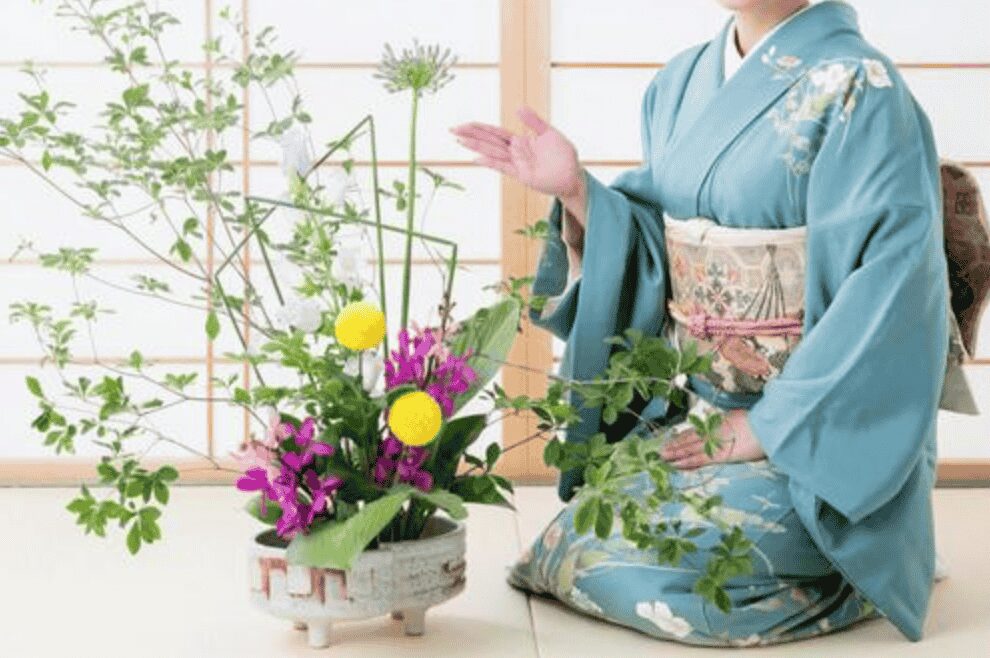
5. Koto music - Japanese Music Like No Other
Koto music is a traditional Japanese music played on a stringed instrument with 13 strings that are plucked with fingerpicks.
The delicacy and power of the performance is very astonishing.
It was introduced from China 1,300 years ago and has been loved by aristocrats.
The koto is played by adjusting the pitch of the strings with a movable bridges and plucked using three fingerpicks.
There are various schools of koto music, but the Gion Corner offers visitors the opportunity to see Kyoto's traditional Ikuta School.
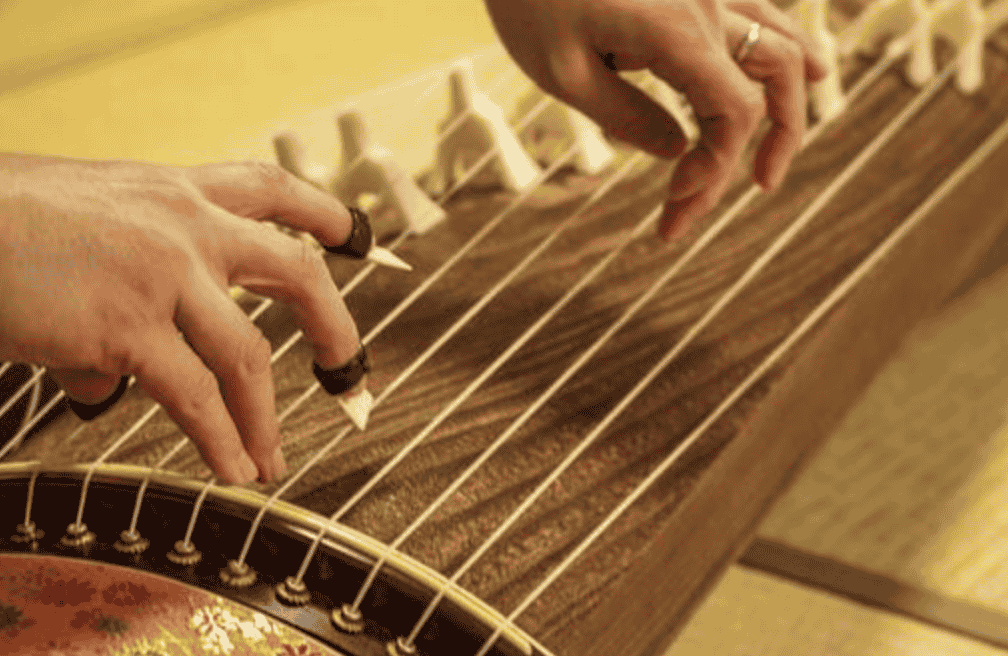
6. Bugaku Dance - A Mix of Exotic Dance and Music
Bugaku is one of the world's oldest musical forms.
It is a traditional Japanese performing art that combines instrumental music and dance, and was developed in the Heian period (794-1185) based on music and dance introduced from the Korean peninsula and mainland China in the 6th and 7th centuries.
It has been passed down to the present day in Japan through events held by the imperial family, shrines, and temples.
The Gion Corner offers a performance of the bugaku “Ranryo-o".
The beautiful and famous general Ranryo-o of Northern Qi (the old name of China) hid his beauty behind a ferocious mask and won a battle.
The song is said to have originated when his soldiers, delighted by his victory, sang a song about his valor.
The song features a beautiful Chinese-style tune and graceful dance.
7. Kyogen Comedy - Classic Drama
Kyogen is a Japanese classical drama established in the Muromachi period (1336-1573).
It is often humorous, but some of its content strikes at the very essence of human nature.
Kyogen is performed in the everyday language of the period between Noh plays, and is characterized by its vivid and comical depiction of the real society of the time.
In the Gion Corner, visitors can see “Boshibari".
(There were two servants who stole and drank sake. The master, annoyed, tricks them into going out and ties one's arm to a pole and the other's hand behind his back. What will happen to them while their master is away?)
8. Bunraku Puppet Theatre - Amalgamation of Story, Music, and Puppets
Bunraku, also called ningyo joruri, is a traditional Japanese puppet show that originated in the Edo period.
In Bunraku, the tayu (storyteller), shamisen player, and puppeteer work together to create a single story.
At the Gion Corner, you can see “Date Musume Koi no Higanoko,” which has been designated as a World Intangible Cultural Heritage.
The story is about a heroine which carries out a daring plan to save her lover, even though it means sacrificing her own life.
9. Noh Play - A Traditional Performing Art
Noh is a Japanese classical drama that originated in the Muromachi period (1333-1573), about 650 years ago.
Noh became Japan's representative theater form and continues to be practised today as a classical performing art.
In the Edo period (1603-1867) it was an art form that the samurai were expected to learn.
In Noh, a story is told by a narrator called a utai, a musical ensemble called a hayashi, and a leading actor called a shi-te, who wears a Noh mask and dances to perform the story.
Noh is often compared to Western opera and musicals.
The stage for Noh is very simple, but the costumes used on the stage are very beautiful and gorgeous, all made of Nishijin brocade, a traditional industry of Kyoto.
In the Gion Corner, you can see the “Hagoromo”.
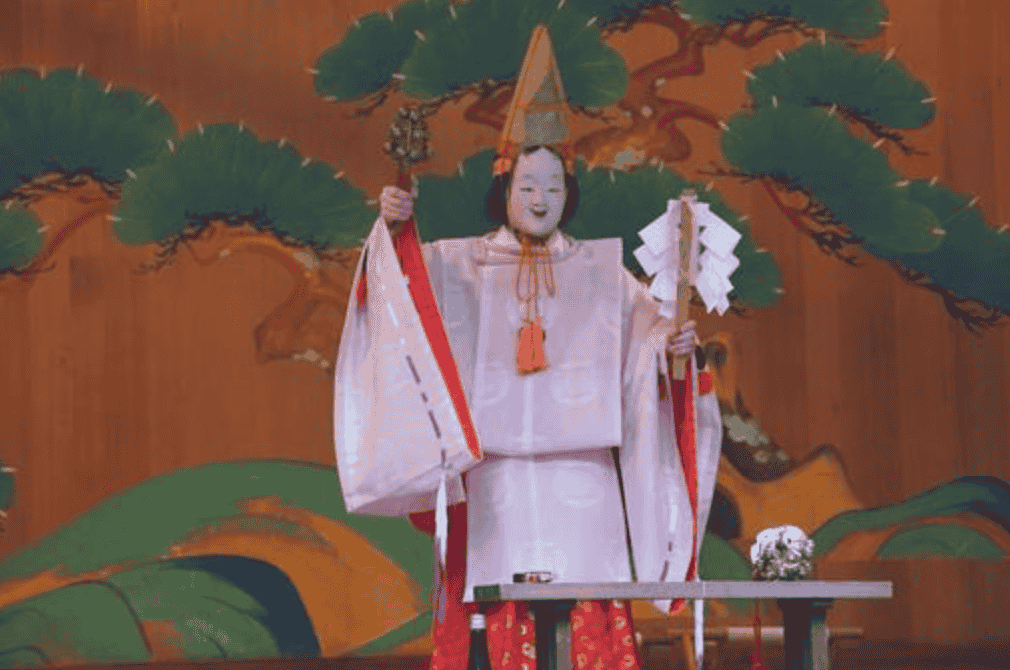
10. Access to Gion Corner
Bus
Take the No. 206 bus from D2 at JR Kyoto Station
5 minutes on foot from the Gion stop
Train
5 minutes on foot from Gion-Shijo Station on the Keihan Railway
10 minutes on foot from “Kyoto Kawaramachi” station on the Hankyu line
11. Dining Spots around Gion Corner
There are many restaurants near Gion Corner where you can enjoy Kyoto cuisine and Japanese food.
Gion Bengara
A traditional Japanese restaurant.
All-You-Can-Eat available.
Location: 107 Shinchi Tominaga-cho, Higashiyama-ku, Kyoto City, Kyoto 605-0078
Business hours: Mon-Sun 12:00~15:00, 17:00~23:00 (Closed on Sunday)
Phone number: 075-541-1029
Reservations can be made through: tabelog, ozmall, yahoo, retty, ikyu, jpneazy
Gion Kyomen
A restaurant with a relaxed atmosphere offering a variety of traditional Japanese dishes, including hearty udon noodles.
Location: 1F, 323 Kitagawa Gion-machi, Higashiyama-ku, Kyoto, 605-0073, Japan
Business hours: Monday-Sunday 11:30~20:30
Phone number: 075-561-7347
Gion Kyomen Official Website
Gion Tokuya
A cozy Japanese confectionery store.
You can enjoy traditional Japanese sweets such as warabimochi and shaved ice in the cozy store.
Location: 570-127, Minamigawa Gion-machi, Higashiyama-ku, Kyoto, 605-0074, Japan
Business hours: 12:00~18:00, Monday~Sunday
Phone number: 075-561-5554
Gion Tokuya Official Website
What are we?
We run Ninja Experience Cafe in Tokyo, Kyoto and Osaka, Japan.
Here you can immerse yourself in Japanese culture through experiencing ninja training.
Both adults and children are welcome to try their hand at defeating the ninja master inside the cafe.
The cafe is an indoor interactive zone, so it can be enjoyed even on rainy days.
If you are thinking "I want to be a real ninja too!” or interested in becoming a real ninja, please visit us.
Reservations can be made here.
Unauthorized copying and replication of the contents of this site, text and images are strictly prohibited.
